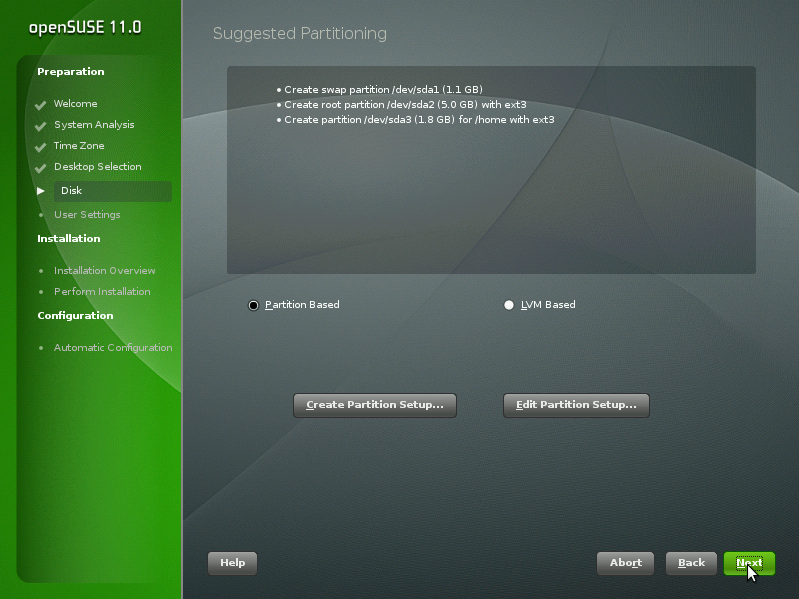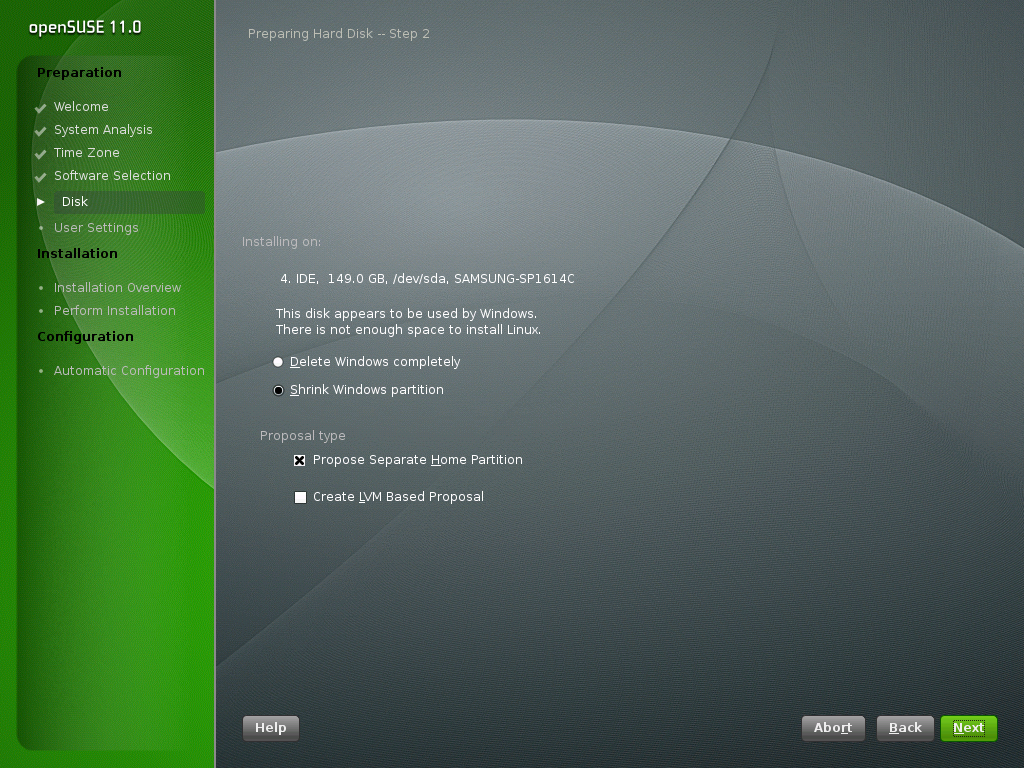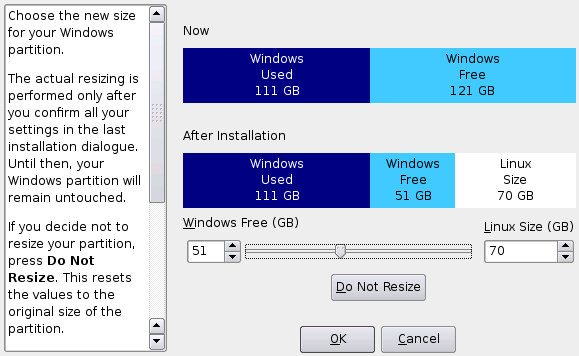1.10 Suggested Partitioning
Define a partition setup for openSUSE in this step. In most cases, a reasonable scheme, that can be accepted without change, is proposed. If a hard disk only containing Windows FAT or NTFS partitions is selected as the installation target, YaST automatically shrinks one of these partitions. Accept the proposal with and proceed with the installation. Experienced users can also customize the proposal or apply their own partitioning scheme.
The proposed partitioning is by
default. If you prefer an setup, check the
respective option to automatically convert the proposal. See
Section 2.2, LVM Configuration,
(↑ Reference ) for more information about the
Logical Volume Manager (LVM).
To make small changes in the proposal—like changing the filesystem
type or encrypt partitions—, select and adjust the settings. Refer to
Section 2.1, Using the YaST Partitioner,
(↑ Reference ) for details.
Figure 1-6 Suggested Partitioning

1.10.1 Partitioning a Specific Disk
If your machine contains more than one hard disk and you want to restrict the partitioning proposal to just one disk, choose and then select a specific disk from the list. If the chosen hard disk does not contain any partitions, yet, the whole hard disk will be used for the proposal, otherwise, you can choose which existing partition(s) to utilize. To add a separate partition for you personal data check . Instead of the default partition based proposal it is possible to . Choose two times to proceed to the next step.
Resizing a Windows Partition
If the selected hard disk only contains a Windows FAT or NTFS partition, YaST offers to delete or shrink this partition. If you select , the Windows partition is marked for deletion and the space is used for the installation of openSUSE.
WARNING: Deleting Windows
If you delete Windows, all data will be lost beyond recovery as soon as the formatting starts.
Figure 1-7 Possible Options for Windows Partitions

To , you need to interrupt the installation and boot Windows to prepare before shrinking it. For all Windows file systems, proceed as follows:
-
Deactivate a Virtual Memory file, if there is one.
-
Run scandisk.
-
Run defrag.
After these preparations, restart the openSUSE installation. When you turn to the partitioning setup, proceed as before and select . After a quick check of the partition, the dialog for resizing the Windows partition opens.
The first bar graph shows how much disk space is currently occupied by Windows and how much space is still available. The second bar graph shows how the space would be distributed after the resizing, according to the current proposal. To change the proposed settings use the slider or the input fields to adjust the partition sizing.
Figure 1-8 Resizing the Windows Partition

If you leave this dialog by selecting , the settings are stored and you are returned to the previous dialog. The actual resizing takes place later, before the hard disk is formatted.
IMPORTANT: Writing on NTFS Partitions
By default, the Windows versions NT, 2000, and XP use the NTFS file system. openSUSE includes read and write access to the NTFS file system, but this feature has a few limitations. This means that you cannot read or write encrypted or compressed files. Furthermore, the Windows file permissions are not honored at the moment. See http://en.opensuse.org/NTFS for more information.
1.10.2 Custom Partitioning
Set up your own partitioning scheme by selecting and then . The Expert Partitioner opens displaying the
current partition setup. You can ,
, , or
partitions. For more information about custom
partitioning, refer to
Section 2.1, Using the YaST Partitioner,
(↑ Reference ).
The Expert Partitioner also offers configuration options for advanced features that are described in detail in the Reference: